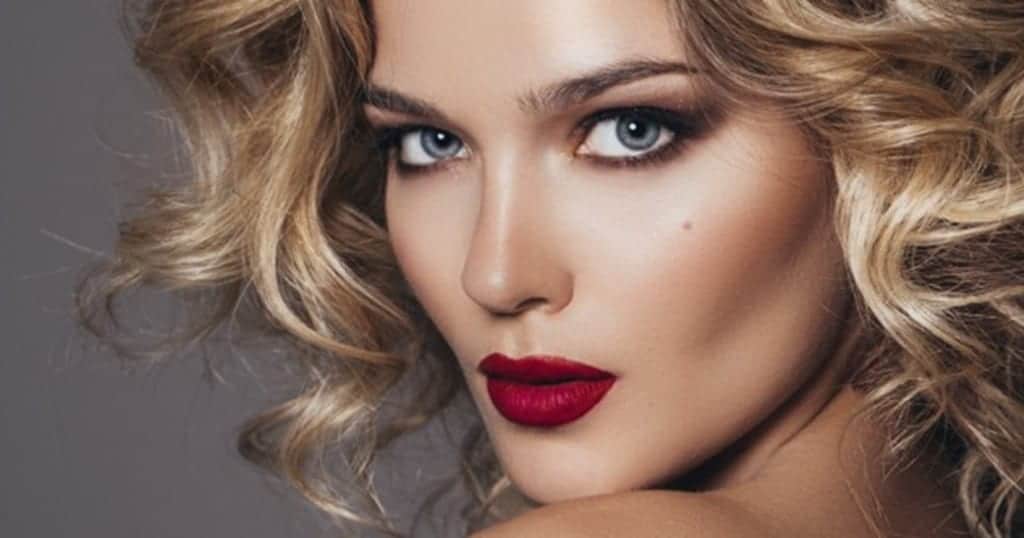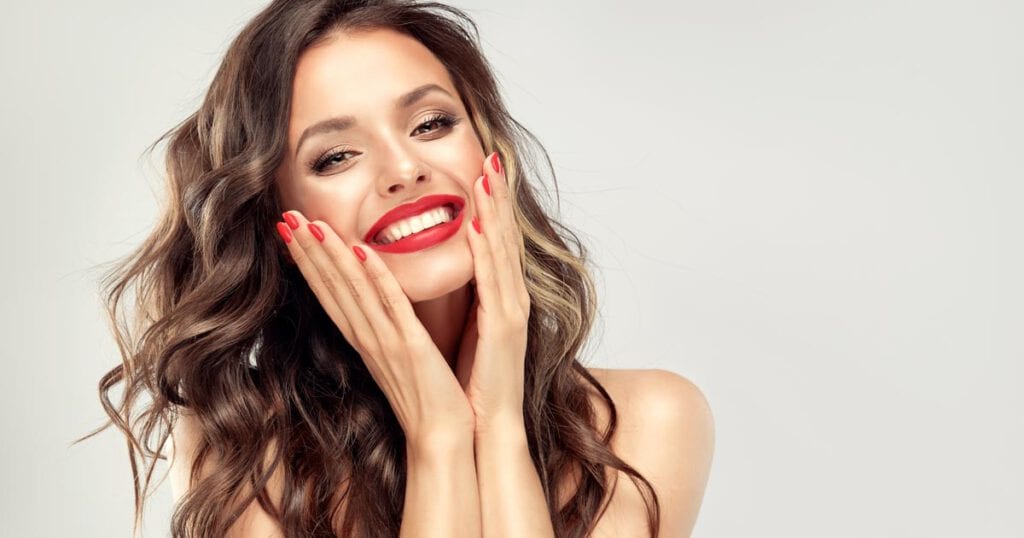Lightening
Lightening the hair is a chemical process that lightens the hair colour. An oxidising agent is always used in lightening treatments. The lightening can either be done with a lightening dye, which dyes the hair’s own pigment lighter, or by “bleaching”, which removes the pigment from the hair completely. Of these two treatments, a lightening dye is much gentler on the hair. Toning should always be added to a lightening dye/bleaching treatment, because it repairs the hair and removes unwanted yellow tones from the light colour.
- To maintain the cool tone of blonde hair, a silver shampoo and conditioner intended for the purpose must always be used in home care. Without these products, the cool blonde shade will disappear and the hair colour will change from cool to warm, usually yellowish.
- Maintenance treatment of cool blonde hair with the appropriate products must be started immediately after the colouring. The hair must not be allowed to turn yellow, because once the cool blonde shade has been lost, restoring it with just home care products is practically impossible.
We will not even attempt to lighten hair dyed with plant dyes or henna.
Highlights and lowlights
Adding highlights or lowlights means separating strands from the hair and treating these strands with a hair colour or a lightener to make them darker or lighter than the base colour or the natural colour. High- and lowlights can create dimension by adding contrast with the rest of the hair. High- and lowlights can be applied with foil, a hood or special combs, or by using brushes to “paint” the colour on the hair.
Balayage
Balayage is a method, in which the hair colour, lightener or semi-permanent colour is applied with a free hand or brushed down with soft strokes directly on the surface of the desired section. This method is used to create dimension when aiming at a soft and natural end result.
The word balayage comes from the French verb balayer, which means to brush or sweep.
Ombré
Ombré is a colouring method, in which the ends of the hair are a lighter colour than the root, and the change of colour from dark to light is clearly sharper than in balayage. In hair with an ombré colour, the horizontal colour shift is very clearly visible.
Toning
Toning means toning the actual colour with a cool shade. Toning turns warm (gold or yellow) tones into cool light ones. Cold and grey tones always require toning. Toning is always an additional service to a colour treatment.
Semi-permanent colour
Semi-permanent colour refers to toning with a mild oxidising agent that does not lighten the hair at all. You can get a semi-permanent colour as is; it is not toning and it does not require getting an actual colour treatment first. Semi-permanent colour will not last as long as a permanent colour, and it will fade during washing faster than a colour treatment. Semi-permanent colour as a treatment is gentler for the hair than a permanent colour.
Root colour
The hair grows from the root, so the growth of roots in a different colour is inevitable. Root colour refers to the hair’s own colour that grows in darker or lighter than the colour applied to the hair length. The limit of a root colour is 3 cm at most. If the length of the roots to be dyed is longer than 3 cm, the treatment required is no longer a root colour, but a normal colour treatment.
Even though the definition of root colour in hair of any length is 3 cm at most, the price of a root colour treatment is lower for short hair than medium or long hair. The difference in the price of root colour is based on the time spent on treating the hair, meaning washing and drying.
Major colour changes
If you plan to make a major colour change in your hair, we warmly recommend a consultation with us. The hairstylist should hear your wishes as well as see the initial condition of your hair: its current colour, length and thickness. This ensures that enough time can be reserved for the job, and we can also tell immediately if it is not possible to realise your wishes in one or two sessions. Examples of such situations include changing from black to a light colour or removing blue direct colour. It is good to keep in mind that the darker the colour hair has been dyed and the more layers of colour have been applied to the hair, the longer and more challenging project it will be to turn hair into a light colour. This inevitably means several appointments.
Special work
We charge an hourly rate for all special work.
Niophlex
A Niophlex intensive treatment is an excellent addition to a perm or colour treatment. The 3-phase Niophlex treatment creates a protective film on the surface of the hair, which prevents damage during chemical treatment, brings important nourishing and revitalising ingredients to hair and, finally, strengthens the scales of the hair, improving its elasticity, strength, shine and overall appearance.

Home dyes
If you have used home dyes, be honest and tell your hairstylist about it before your colour treatment starts. Home dyes can often prevent professional hair colour from working, which means that in the worst case, your colour treatment will not have any results and you lose both time and money on a treatment that has no effect. A hairstylist will always notice that home dyes have been used, at the latest when professional dyes have had no effect on the hair after the application period.
Hair that has been dyed at home can be successfully coloured at a salon, but the hairstylist must always know about the home dye used in advance. In that case, the hairstylist can choose the right colour and method to ensure the best possible result.
Allergies
You can become allergic to hair dyes, just like any other kinds of cosmetics. If you have previously had an allergic reaction to a hair dye, it is recommended that you never attempt to dye your hair, lashes or eyebrows with a permanent colour ever again.
Pregnancy and breastfeeding
Dyeing hair during pregnancy and breastfeeding is not prohibited. However, it is good to know that the success and permanence of any kind of chemical treatment such as a colour or perm during pregnancy and breastfeeding depends very much on the individual.
During pregnancy and breastfeeding, you may get the best or the worst perm of your life. You may get the perfect colour, or none of it may stick to your hair. Pregnancy and breastfeeding change the hormonal activity of women so much that we unfortunately cannot give any guarantees for the success of chemical treatment of hair. You should know that in these cases, the failure of a chemical treatment is not grounds for cancellation of the sale.
The age limit for colour is 16 years
The Finnish Act on Cosmetic Products does not directly prohibit the colouring of hair of those under 16 years old, but based on the Finnish consumer safety principles, hairstylists are responsible for the safety of the services they offer. For this reason, we do not dye the hair of those under 16 years old even with the consent of their parent or guardian.





